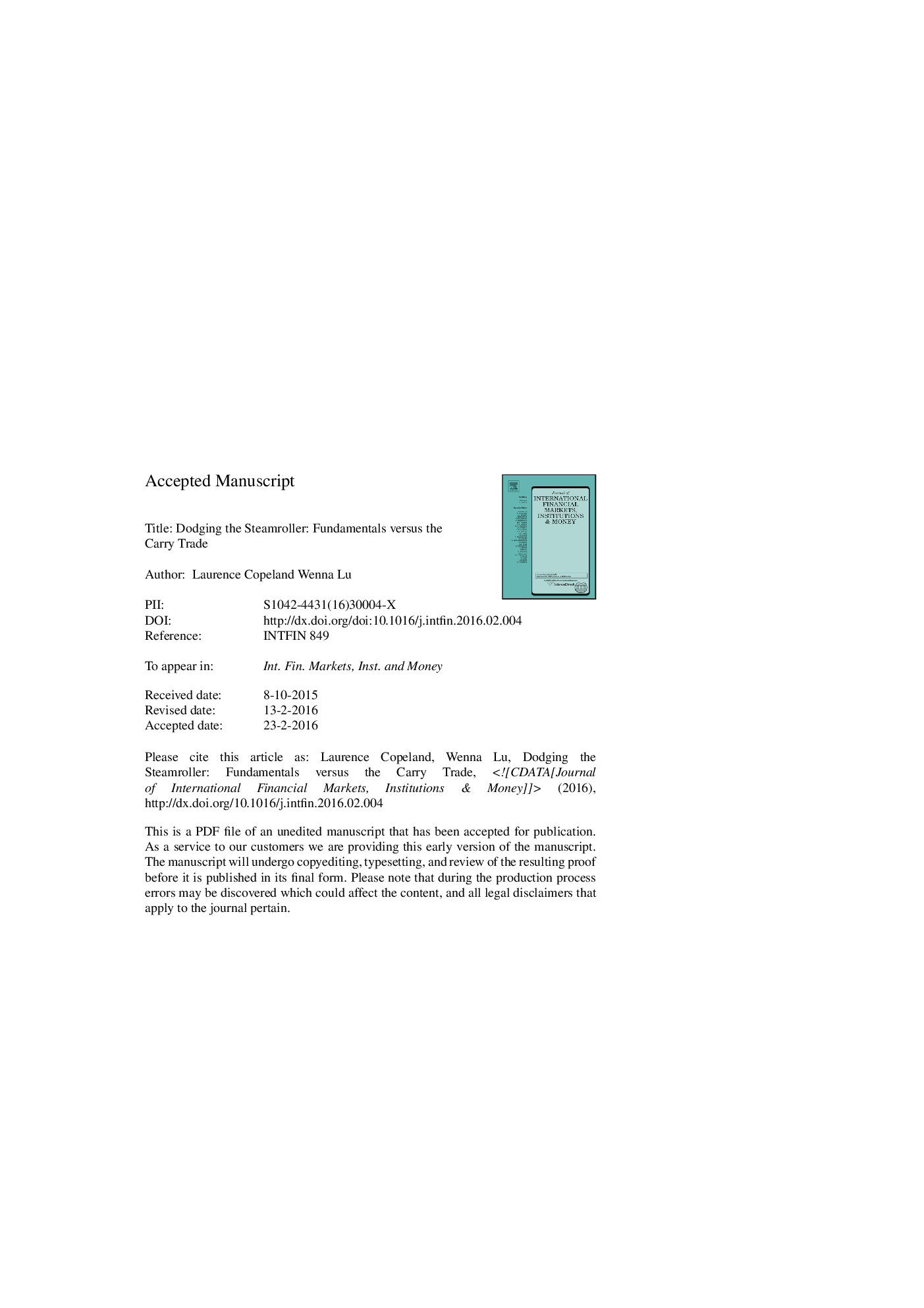| Article ID | Journal | Published Year | Pages | File Type |
|---|---|---|---|---|
| 7364570 | Journal of International Financial Markets, Institutions and Money | 2016 | 55 Pages |
Abstract
Although, according to uncovered interest rate parity, exchange rates should move so as to prevent the carry trade being systematically profitable, there is a vast empirical literature demonstrating the opposite. High interest currencies more often tend to appreciate rather than depreciate, as noted by Fama (1984). In this paper, we treat volatility as the critical state variable and show that positive returns to the carry trade are overwhelmingly generated in the low-volatility “normal” state, whereas the high-volatility state is associated with lower returns or with losses as currencies revert to the long run level approximated by their mean real exchange rate - in other words, purchasing-power parity (PPP) tends to reassert itself, at least to some extent, during periods of turbulence. We confirm these results by comparing the returns from three possible monthly trading strategies: the carry trade, a strategy which is long the undervalued and short the overvalued currencies (the “fundamental” strategy) and a mixed strategy which involves switching from carry trade to fundamentals whenever the previous period's volatility was in the top quartile. We are left with the anomalous (but apparently robust) result that the mixed strategy appears to generate higher returns and Sharpe ratios than either of the pure strategies.
Related Topics
Social Sciences and Humanities
Economics, Econometrics and Finance
Economics and Econometrics
Authors
Laurence Copeland, Wenna Lu,
